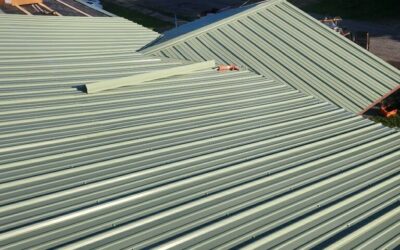How Much A New Roof Cost: A Complete Homeowner’s Guide
One of the biggest questions homeowners face when dealing with roof replacement is how much a new roof cost. It’s a natural concern because a roof is a major investment, both financially and in terms of protecting your home. Roof costs vary widely depending on factors like material choice, home size, labor rates, and regional conditions. Understanding what goes into the price can help you plan, budget, and make informed choices when the time comes to replace or install a new roof.
This guide breaks down the elements that influence roofing costs, compares different roofing materials, and explores additional expenses you may encounter. By the end, you’ll have a clear understanding of what to expect and how to prepare for this significant home improvement project.
Why Roof Replacement Costs Vary
Roof replacement isn’t a one-size-fits-all project. The final cost is influenced by numerous factors, some of which you can control and others that are determined by the condition and design of your home.
Key elements that affect cost include:
- Roof size and pitch – Larger roofs require more materials and labor. Steeper roofs increase installation difficulty.
- Material selection – Asphalt shingles, metal, tile, or slate all come with different price points.
- Labor rates – Vary depending on region, company reputation, and demand.
- Tear-off vs. overlay – Removing an old roof adds expense compared to installing over existing shingles.
- Roof complexity – Valleys, dormers, chimneys, and skylights increase labor and material needs.
- Location and climate – Areas with extreme weather may require specific materials or reinforcement.
Average Cost Ranges for a New Roof
While exact numbers depend on your unique situation, averages can provide a starting point.
- Asphalt shingles: $5,000–$12,000 for most homes.
- Metal roofing: $10,000–$25,000 depending on style.
- Clay or concrete tile: $15,000–$35,000, sometimes more.
- Slate roofing: $20,000–$50,000 or higher.
- Wood shakes: $12,000–$25,000 on average.
These ranges assume typical residential roof sizes of 1,500–3,000 square feet. Costs may be lower for small homes or significantly higher for large or complex roof designs.
Cost Per Square Foot
Roofing costs are often expressed per “square.” In roofing terms, one square equals 100 square feet of coverage.
- Asphalt shingles: $3–$6 per square foot.
- Metal roofing: $7–$12 per square foot.
- Tile roofing: $10–$20 per square foot.
- Slate roofing: $15–$30 per square foot.
- Wood shakes: $7–$12 per square foot.
Understanding these per-square-foot averages helps you estimate based on your home’s square footage.
The Role of Roof Size and Pitch
Your home’s dimensions are a major cost driver. A 1,500-square-foot roof is much cheaper than a 3,000-square-foot roof, simply because it requires fewer materials and less labor.
Pitch, or slope, also matters. A steep roof is harder to work on, requiring more safety measures, specialized equipment, and time. Contractors typically charge more for roofs with higher pitches.
Material Costs Explained
Different materials carry different costs. Let’s explore them more closely.
Asphalt Shingles
- Most affordable and common.
- Durable for 15–30 years depending on grade.
- Wide variety of colors and styles.
Metal Roofing
- Higher upfront cost but lasts 40–70 years.
- Energy efficient and resistant to fire and pests.
- Available in standing seam, panels, and shingles.
Clay and Concrete Tiles
- Very durable, lasting up to 100 years.
- Heavy and require reinforced roof structures.
- Excellent for Mediterranean, Spanish, or Southwestern styles.
Slate Roofing
- One of the most expensive options.
- Lifespan often exceeds 100 years.
- Natural stone appearance with unmatched durability.
Wood Shakes and Shingles
- Provide a rustic, natural look.
- Lifespan around 20–40 years.
- Require more maintenance to prevent mold and rot.
Tear-Off vs. Overlay
When installing a new roof, you can either:
- Tear off the old roof and start fresh. This ensures structural integrity and exposes hidden issues but adds labor and disposal costs.
- Overlay new shingles on top of old ones. This is cheaper but can only be done if the roof structure is sound and has only one existing layer.
Tear-offs generally add $1,000–$3,000 or more to the project, depending on roof size and disposal fees.
Additional Cost Considerations
Beyond materials and labor, several other costs often surprise homeowners:
- Permits: Many municipalities require building permits. Fees can range from $100–$1,000.
- Structural repairs: If rot or damage is found after tear-off, repair costs add up.
- Flashing and ventilation: New flashing, vents, or ridge caps may be necessary.
- Insulation upgrades: Adding or replacing attic insulation can increase efficiency.
- Skylight installation or replacement: Can be combined with roofing for efficiency.
Regional Differences in Roofing Costs
Where you live impacts roof replacement costs.
- Urban areas typically have higher labor and permit costs.
- Rural areas may have lower labor rates but higher material delivery charges.
- Regions prone to hurricanes, snow, or earthquakes often require specialized materials and reinforcements.
Labor Costs
Labor is often 40–60% of the total project cost. Experienced crews with strong reputations may charge more, but they also bring peace of mind that the job will be done correctly. Cutting corners on labor may save money upfront but cost more in repairs later.
Warranties and Their Impact on Cost
Certain roofing materials and contractors offer extended warranties. For example:
- Manufacturer warranties cover defects in materials.
- Workmanship warranties cover installation quality.
Longer warranties sometimes cost more initially but can protect against expensive issues down the line.
How Roofing Affects Home Value
A new roof isn’t just an expense; it’s an investment. Real estate experts consistently note that roof replacement can improve curb appeal, speed up sales, and recoup much of its cost when selling. Depending on material, you may recover 60–70% of your investment in resale value.
How Long Different Roofs Last
Longevity is a critical part of the cost equation.
- Asphalt shingles: 15–30 years.
- Metal roofing: 40–70 years.
- Tile roofing: 50–100 years.
- Slate roofing: 75–150 years.
- Wood shakes: 20–40 years.
While some materials cost more upfront, their longer lifespan can make them more economical over decades.
Timing and Seasonal Considerations
Roofing costs can fluctuate by season.
- Spring and summer are peak roofing seasons, often with higher prices.
- Late fall and winter may offer lower rates but come with weather risks.
- Planning ahead allows you to choose the best time both for pricing and availability.
Financing Options for Roof Replacement
Because roofing is a significant investment, many homeowners explore financing. Options may include:
- Home equity loans or lines of credit.
- Personal loans.
- Credit card financing for smaller projects.
- Contractor financing programs.
Understanding these choices helps make the project more manageable.i
insurance Coverage and Roof Costs
Homeowner’s insurance may cover roof replacement in certain situations, like storm damage. However, it rarely covers replacement due to age or wear and tear. Always review your policy and speak with your insurer to clarify coverage before starting the project.
How to Save Money on a New Roof
While you can’t always avoid costs, you can make smart choices to manage them:
- Get multiple quotes from reputable contractors.
- Consider durable materials that provide long-term value.
- Ask about energy-efficient shingles that may qualify for rebates.
- Schedule during off-peak seasons if possible.
- Maintain your roof regularly to extend its lifespan.
Common Mistakes Homeowners Make About Roof Costs
- Only looking at the cheapest option.
Long-term value is more important than initial price. - Not budgeting for unexpected repairs.
Tear-offs often reveal hidden damage. - Skipping inspections.
Regular inspections prevent costly surprises. - Choosing materials based only on appearance.
Performance and durability are equally important.
Case Examples of Roof Costs
To illustrate how costs vary, here are some examples:
- Small ranch home (1,200 sq. ft., asphalt shingles): Around $6,000.
- Two-story colonial (2,500 sq. ft., asphalt shingles): $12,000–$15,000.
- Large custom home with tile roof (3,500 sq. ft.): $30,000–$40,000.
- Historic home with slate roofing (2,800 sq. ft.): $45,000–$60,000.
These examples show the wide range of possibilities depending on size and material.
Preparing for a Roof Replacement
Before beginning, take these steps:
- Inspect your current roof for leaks, missing shingles, or sagging.
- Gather multiple quotes and check contractor references.
- Discuss materials, warranties, and installation timeline.
- Budget for both expected and unexpected expenses.
- Plan for cleanup and disposal, as roofing projects generate significant debris.
The Emotional Side of Investing in a New Roof
While roofing costs may seem overwhelming, many homeowners find peace of mind knowing their home is protected. A new roof means fewer worries about leaks, storms, or structural issues. It also offers pride in appearance and security for the family.
Looking Ahead: Trends in Roofing Costs
Industry experts expect roofing costs to rise due to material shortages, labor demand, and inflation. Sustainable roofing options such as recycled materials or solar shingles may also influence future prices.
Homeowners who plan ahead and budget realistically will be better prepared for these changes.
Conclusion
Understanding how much a new roof cost is essential for any homeowner preparing for replacement. While prices vary based on size, material, and labor, the investment provides long-term protection, improved curb appeal, and added value to your home. From asphalt shingles to slate, each option comes with different benefits and costs, but all serve the critical purpose of safeguarding your property.
By considering all factors—materials, labor, warranties, and maintenance—you can make a confident, informed choice. A roof isn’t just an expense; it’s a commitment to the safety, comfort, and beauty of your home for decades to come. 440-235-3124
 (440) 307-2060
(440) 307-2060

